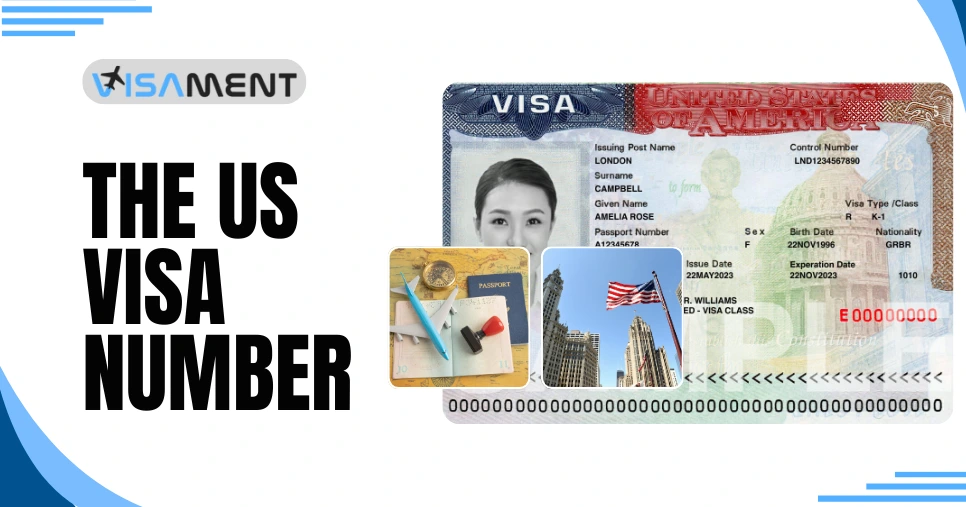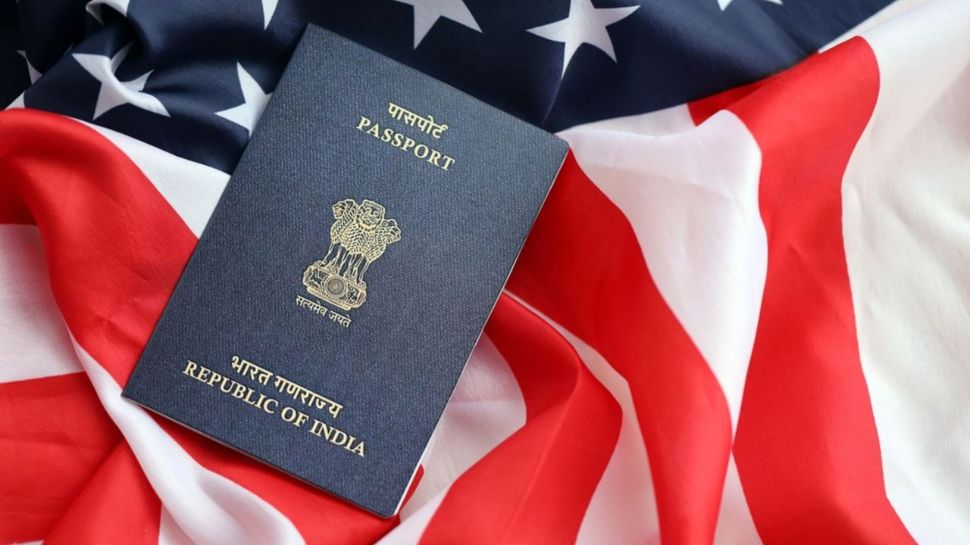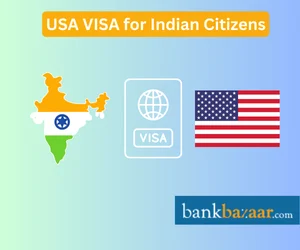How to Switch Between Different Types Of US Visas
Unlocking Opportunities: Necessary Info on US Visas for Indian Citizens
Maneuvering the complexities of US visa alternatives is crucial for Indian people intending to check out chances in the US. With numerous groups varying from temporary visitor visas to pathways for permanent residency, recognizing the nuances of each can noticeably influence one's trip. This discussion will highlight crucial info, consisting of application procedures and qualification standards, that can equip people in their pursuit of brand-new experiences. As we unpack these crucial facets, the question develops: what approaches can one employ to boost their chances of an effective application?
Overview of US Visa Types
When passing through the complex landscape people migration, understanding the various sorts of visas offered is essential for Indian residents looking for access into the US (Types Of US Visas). The US immigration system is mostly classified right into 2 wide categories: immigrant visas and non-immigrant visas
Immigrant visas are designated for those meaning to live completely in the US. These include family-sponsored and employment-based visas, where applicants typically need an enroller. Non-immigrant visas, on the various other hand, satisfy individuals seeking short-term residence, such as visitors, service site visitors, and those taking a trip for details purposes like job or study.
Within the non-immigrant classification, several visa types exist, consisting of B-1/ B-2 for service and tourism, H-1B for specialized professions, L-1 for intra-company transferees, and O-1 for individuals with phenomenal abilities. Each visa has unique eligibility requirements and application processes, demanding detailed research study to figure out the ideal classification.
Understanding these categories is important for Indian citizens, as it enables them to browse the application procedure much more effectively, guaranteeing they choose the correct visa kind to satisfy their certain demands and objectives. How To Get US Visa From India.
Pupil Visa Options
For Indian people desiring study in the US, trainee visas present a vital path to go after scholastic opportunities. The main visa classifications for students are the F-1 and M-1 visas.
The F-1 visa is marked for academic students registered in a permanent program at an approved establishment, such as universities and universities. This visa allows trainees to engage in on-campus employment and, under specific problems, take part in optional practical training (OPT) after finishing their degree, offering useful work experience in their discipline.
On the other hand, the M-1 visa is meant for trade or non-academic programs. It deals with students pursuing technological or vocational training, enabling them to enroll in non-degree programs. M-1 visa owners might take part in functional training, yet it is normally more minimal contrasted to the F-1 classification.
To acquire a trainee visa, candidates must protect admission to a united state institution, get a Kind I-20, and demonstrate economic capability to support their education and living expenses. Understanding these visa choices is considerable for Indian residents planning to begin their instructional journey in the US.
Visa Categories
Several Indian people looking for job opportunity in the US may consider various classifications tailored to different expert requirements and certifications. One of the most noticeable is the H-1B visa, developed for knowledgeable employees in specialty occupations calling for a greater education degree or its equivalent. It permits US companies to temporarily utilize international workers, with a cap on the variety of visas issued yearly.
An additional essential classification is the L-1 visa, which facilitates the transfer of staff members within international companies. The L-1A visa is for managers and executives, while the L-1B visa is for staff members with specialized expertise.
The O-1 visa satisfies people with extraordinary capabilities in their area, including science, arts, or organization. For farming or seasonal job, the H-2A and H-2B visas are offered, allowing companies to hire international employees for short-term placements.
Family-Based Immigration
Family-based immigration provides a path for US citizens and authorized long-term citizens to rejoin with their relatives from India. This immigration category is essential for keeping familial bonds and assisting in the integration of relative right into USn society. US people can request for immediate family members, consisting of spouses, youngsters, and moms and dads, without dealing with yearly limits on visas. This expedited procedure significantly minimizes waiting times for these close family members connections.
On the other hand, authorized long-term residents may sponsor spouses and unmarried kids, but they undergo annual caps, resulting in longer wait times. The family-sponsored immigration system is separated right into two major classifications: prompt loved ones and household choice groups. The previous includes those who have a straight connection with a united state citizen, while the last includes farther relatives, such as brother or sisters and wedded children of residents, and kids of legal permanent citizens.
For Indian citizens seeking family-based immigration, comprehending the nuances of this system is imperative. Appropriate paperwork and adherence to application procedures are essential for effective sponsorship. By navigating with these complexities, households can function towards rejoining and building their lives together in the US.
Long-term Residency Process
The procedure of getting irreversible residency in the US entails numerous key visa groups customized for Indian residents. Understanding the application actions, including required documentation and qualification requirements, is necessary for an effective end result. Furthermore, possible applicants must recognize the expected timeline and specific needs connected with each category.
Visa Categories Review
While going across the intricacies of the US immigration system, Indian citizens seeking long-term residency has to acquaint themselves with various visa groups tailored to various conditions. The primary path for permanent residency is through employment-based visas, which are categorized into numerous preferences, including EB-1 for people with extraordinary abilities, EB-2 for specialists holding sophisticated degrees, and EB-3 for competent employees. Each category has particular qualification needs and processing times.

Diversity visas, although restricted in number, provide an opportunity for people from underrepresented nations to make an application for long-term residency via a lotto system. Additionally, altruistic choices such as asylum and refugee condition offer pathways for those encountering persecution.
Comprehending these visa categories is necessary for Indian residents, as they significantly affect the technique for obtaining permanent residency in the US. Each classification's nuances and demands require careful consideration to straighten with individual scenarios and goals.
Application Process Actions
Guiding the application process for irreversible residency in the US includes numerous vital steps that must be diligently followed to ensure an effective outcome. The journey normally begins with determining the appropriate immigration category, such as employment-based or family-sponsored visas. Candidates have to gather crucial documentation, including evidence of qualification, economic declarations, and personal recognition.
Once the category is recognized, the next action is to file the Type I-130 (Request for Alien Loved One) or Type I-140 (Immigrant Petition for Alien Worker), depending on the basis of the application. Adhering to the approval of the petition, applicants will certainly need to complete the National Visa Center (NVC) handling by submitting the called for fees and kinds.
Next off, the candidate needs to go through a clinical assessment and obtain authorities clearance certifications. As soon as these are finished, an interview will be set up at the US consulate or embassy. It is essential to prepare extensively for this interview, as it can greatly affect the decision on the application. Finally, upon approval, the applicant will obtain their permit, providing them irreversible residency in the US.
Timeline and Demands
Charting the timeline and requirements for acquiring long-term residency in the US is essential for Indian citizens seeking to establish a long-lasting existence. The process largely rests on employment-based or family-sponsored paths, each with details requirements and timelines.
For employment-based immigration, the procedure typically begins with a labor certification, which can take a number of months. As soon as accepted, the company submits a Kind I-140, Immigrant Petition for Alien Worker, which can take an additional 6 months to a year, depending upon the processing center. Complying with I-140 approval, applicants might need to wait on their top priority date to become current, which can vary considerably based upon the candidate's category and native land.
For family-sponsored immigration, US citizens can request for immediate family members, which normally leads to faster handling. Various other family members groups might involve longer wait times due to yearly caps.
Application Treatments
Comprehending the application treatments for US visas is crucial for Indian people looking for entrance into the US. US Visas For Indian Citizens. This section will offer a review of numerous visa classifications and lay out the step-by-step procedure for using. By following these standards, candidates can navigate the intricacies of the visa properly
Visa Categories Review
Maneuvering the different visa categories readily available to Indian people can be a complex procedure, but it is crucial for those looking for to travel, work, or research study in the US. The US visa system is categorized largely into non-immigrant and immigrant visas, each offering distinct objectives.
Non-immigrant visas, such as B-1/ B-2 for company and tourism, F-1 for academic research study, and H-1B for specialized employment, enable short-lived stays. Candidates need to show their intent to return to India after their visit.
In comparison, immigrant visas, including family-sponsored and employment-based groups, supply a pathway to permanent residency. These visas usually call for sponsorship from a family member or employer in the US, along with an extensive application process.
)
Step-by-Step Refine
Commonly, the application process for US visas involves several important actions that applicants have to carefully comply with to guarantee a smooth experience. The initial step is to establish the suitable visa classification based on the purpose of traveling, such as job, study, or tourist. As soon as the group is determined, applicants have to finish the on-line DS-160 type, providing exact personal information and travel information.
After submitting the DS-160, candidates must pay the visa charge, which varies by visa kind. Next off, schedule a consultation for a visa meeting at the nearest US Embassy or Consulate. Types Of US Visas. It is important to get ready for the meeting by gathering required files, consisting of a legitimate visa, visa confirmation, charge settlement invoice, and any kind of sustaining documentation specific to the visa group
On the day of the meeting, arrive punctually and gown suitably. During the meeting, be prepared to answer inquiries regarding your traveling objectives, economic security, and connections to India. If approved, the visa will be marked in the visa, allowing for travel to the United States. Following these actions guarantees a well-organized and reliable application procedure for Indian citizens.
Tips for an Effective Application

Ensure that all kinds are completed properly and honestly. Small mistakes or omissions can cause delays and even denials. It is advisable to collect all essential sustaining files, consisting of economic declarations, work letters, and evidence of connections to India, which demonstrate your intent to return post-visit.
Plan for your visa meeting by practicing responses to typical questions check here associated with your itinerary and background - How To Get US Visa From India. Self-confidence and clearness can considerably impact the police officer's perception. Ultimately, consider looking for help from credible migration specialists if you really feel overloaded
Regularly Asked Questions
What Are the Processing Times for US applications?
Processing times for US visa can vary significantly based upon the visa type, application volume, and the applicant's place - Types Of US Visas. Normally, candidates should prepare for a processing period varying from a few weeks to a number of months
Can I Adjustment My Visa Standing While in the US?
Yes, individuals can alter their visa standing while in the US, given they satisfy eligibility needs and comply with correct procedures. It is vital to file the ideal application with US Citizenship and Immigration Provider (USCIS)
Are There Age Purview for US Visa Candidates?
There are usually no details age restrictions for US visa candidates; nonetheless, certain visa classifications might have age-related eligibility standards. It's crucial to evaluate the requirements for each and every visa kind to assure conformity.
What Prevail Reasons for Denial?
Usual factors copyright rejection consist of not enough economic resources, failure to show connections to the home nation, incomplete application forms, lack of correct paperwork, previous migration violations, and failing to satisfy qualification criteria for the particular visa category.
Just How Can I Appeal a Visa Denial Decision?
To appeal a visa denial, review the consular police officer's factors, gather supporting documents, and submit a formal interest the suitable authority, guaranteeing to stick to defined timelines and step-by-step needs for the allure process.